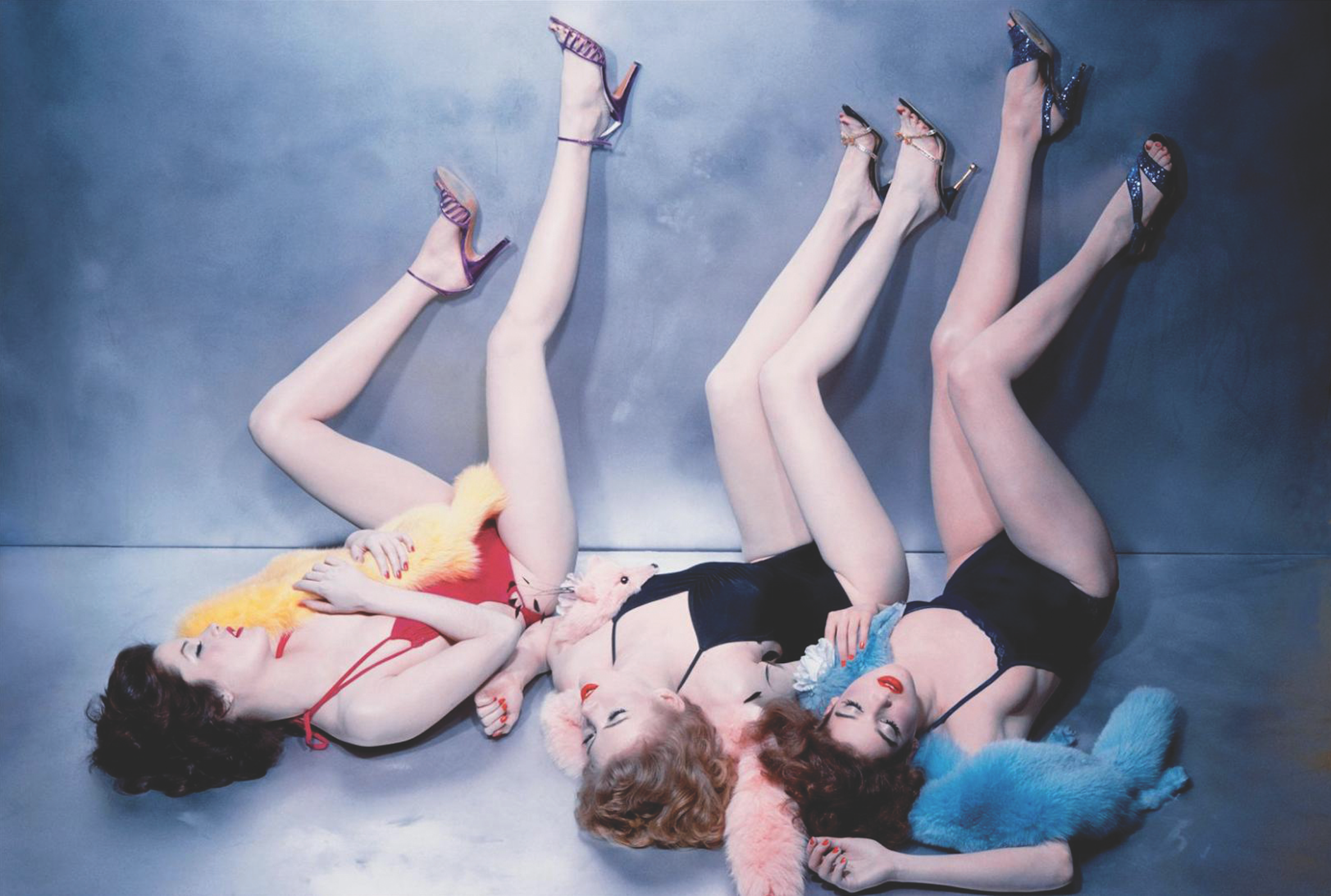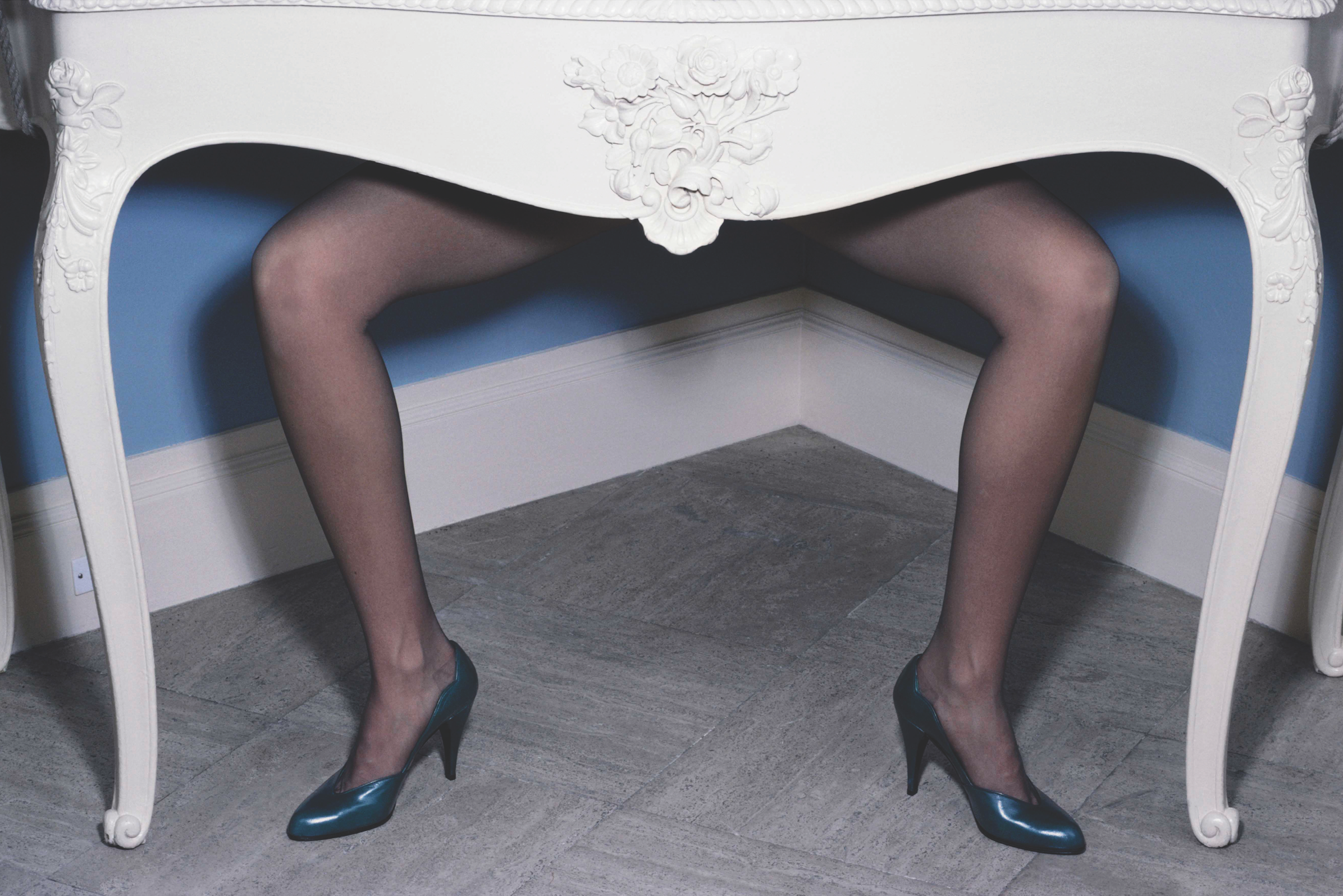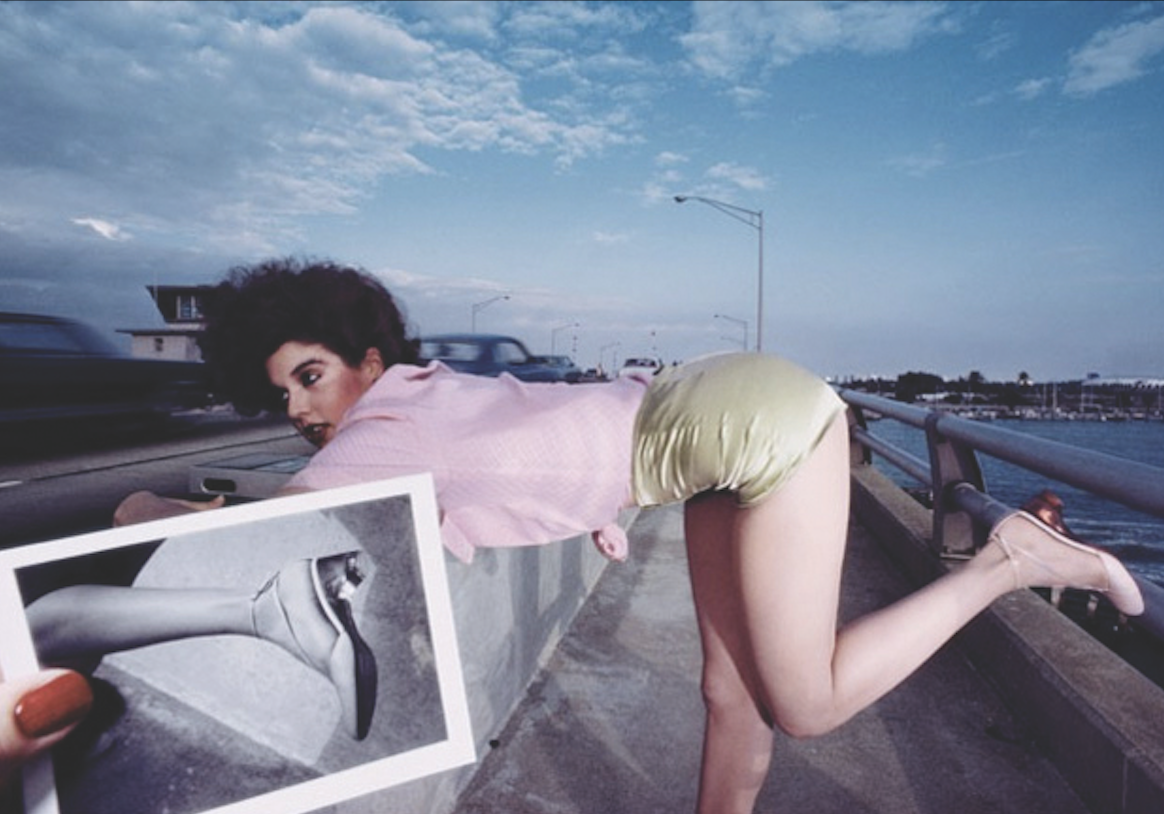FEATURE: GUY BOURDIN - SEXUAL, SENSUAL, & SINISTER
SEXUAL, SENSUAL, & SINISTER
Guy Bourdin was a complex and disturbed man. While he created timeless beauty, the leading French photographer was in fact obsessed with death, and always had a difficult relationship with women. Abandoned as a child by his mother, he often maltreated his models, while at least two of his former lovers committed suicide.
Inspired by Man ray and helmut newton, Guy Bourdin revolutionized photography in the latter half of the 20th century. he was among the first to break with the realistic approach to advertisement and fashion photography. To him, it was no longer enough to just see a pretty girl in pretty clothes in a pretty environment. Instead, he created voyeuristic scenes that were at once erotic and subversive, a weird mix of death and desire, eros and Thanatos, the Beauty and the Beast.
The first photo he ever published (in french Vogue) set the tone for what was to come. It shows a stylish lady wearing an immaculate white hat, while standing under a series of freshly butchered cow heads. Later photos include that of a model lying face-down in a pool of blood; a woman lying naked over a table, while another is hung from the ceiling; and a pair of high-heeled legs lying in grass, suggesting a murder just took place. Bourdin often shows but a woman’s legs. Another reoccurring theme is that of a beautiful, glamorous woman standing alone along the road. “A prostitute?” we are left to wonder, “or just a girl whose car broke down?”
Bourdin’s photos present a carefully constructed scene, which hint that something (bad) may have happened, yet which leave it up to the viewer to fill in the accompanying tale. The fashion item hardly plays a role of importance. Take for example Bourdin’s iconic image of a crashed car, behind the outline of a female body and a pair of brightly colored sunglasses and high heels. Anyone who observes that scene will ponder: what on earth has happened here, and what will happen now? It is as if you walk into a cinema in which the film shown has been put on pause.
The beauty and glamour of Bourdin’s subjects starkly contrast with the often gloomy setting, which naturally only enhances the viewer’s sense of shock and bewilderment. here, one arguably detects the influence of the surrealist movement. After all, Bourdin had studied fine arts and in 1950 became a pupil of Man ray.
yet, Bourdin’s obsession with violence and death, as well as difficult relationships with women, seems to be more deeply rooted in his troublesome youth. shortly after his birth in Paris in 1921, he was abandoned by his mother, and his stepbrother has claimed that Bourdin had never forgiven her. he was raised by his father’s parents and reportedly saw his mother only once in his life. she is said to have been a pale, yet elegant redhead.
It appears that Bourdin was not a very pleasant man. editors who worked with him described him as a small man with a high-pitched, whiny voice. one of them said he looked like a peasant in a Breughel painting. he was furthermore known to be extremely demanding. Take the photo of the three girls in bathing suits and high heels, hanging upside down from a gym’s ceiling. knowing Bourdin’s obsession for detail, you bet this was not a one-shot affair. I mean, this was a man who once insisted on coloring the sea, as the blue was not entirely to his liking.
Most famously, he once wanted to photograph two women completely covered in black pearls. so, he poured glue over them and packed them with precious stones. yet, as their skin could not breathe, they soon fainted. When his editor warned Bourdin later that the models could have died, he smiled and said that would have been “beautiful.”
his demanding and, at times, cruel way of treating models was nothing compared to his personal relationships with women. Bourdin proved to be an extremely possessive man who, arguably out of fear of re-abandonment, had the nasty habit to lock his partners inside the house. he did not even allow them a phone. The consequences were terrible.
In 1961, Bourdin married solange Gèze, a secretary, with whom he had a son named samuel. They soon grew apart and Bourdin started first to go out with holly Warner and then with a redheaded photomodel named eva Gschopf. And here the horror began. Warner tried to commit suicide by slashing her wrists, but
survived and left Bourdin. Gschopf reportedly fell from a tree and died. Bourdin then hooked up with her best friend, sybille, who was again a redhead. Bourdin’s 13-year-old son samuel in 1981 found her hanging from a rope in their apartment. Meanwhile, Bourdin’s wife solange had already died in strange circumstances. some say from an overdose. others claim she had a heart attack.
one famous image Bourdin made for Charles Jourdan shoes shows a headless woman lying on a bed with a TV blaring next to her and a young boy standing in the doorway. It appeared much later that this scene was in fact a (partial) reenactment of solange’s death. Another example illustrating Bourdin’s morbid fascinations: he once planned to photograph dead bodies in a morgue over the period of a year to document their decay.
A graduate in fine arts, Bourdin discovered his love for the camera in 1948 during his military service in dakar and, upon his return to Paris, did all sorts of odd jobs to follow his dream. As said previously, after six refusals, Man ray in 1950 accepted Bourdin as a pupil. Two years onward he had his first exhibition, and five years later he did his first shoot for Vogue, for which he continued working throughout his life. Meanwhile, he also did famous ad campaigns for Charles Jourdan, Chanel, ungaro, Versace, Pentax and Bloomingdale.
strangely, Bourdin always refused to have his work published or exhibited outside magazines, while in 1985 he refused the Grand Prix national de la Photographie, even though he was by then in desperate need of money. It has never become clear why Bourdin was so vehemently opposed to see his work in books or galleries, and why he refused the award. Most likely, despite his success, Bourdin remained insecure about himself and his work. his work may be regarded as excellent photography, it was perhaps not the “art” he had dreamt of as a youngster.
Bourdin died in Paris in 1991. ever since, his work has been exhibited around the world and published in the book “exhibit A.” And so Bourdin’s legacy lives on: the beautiful, sensual and somehow sinister world of what seems a sadly disturbed and unhappy man.




